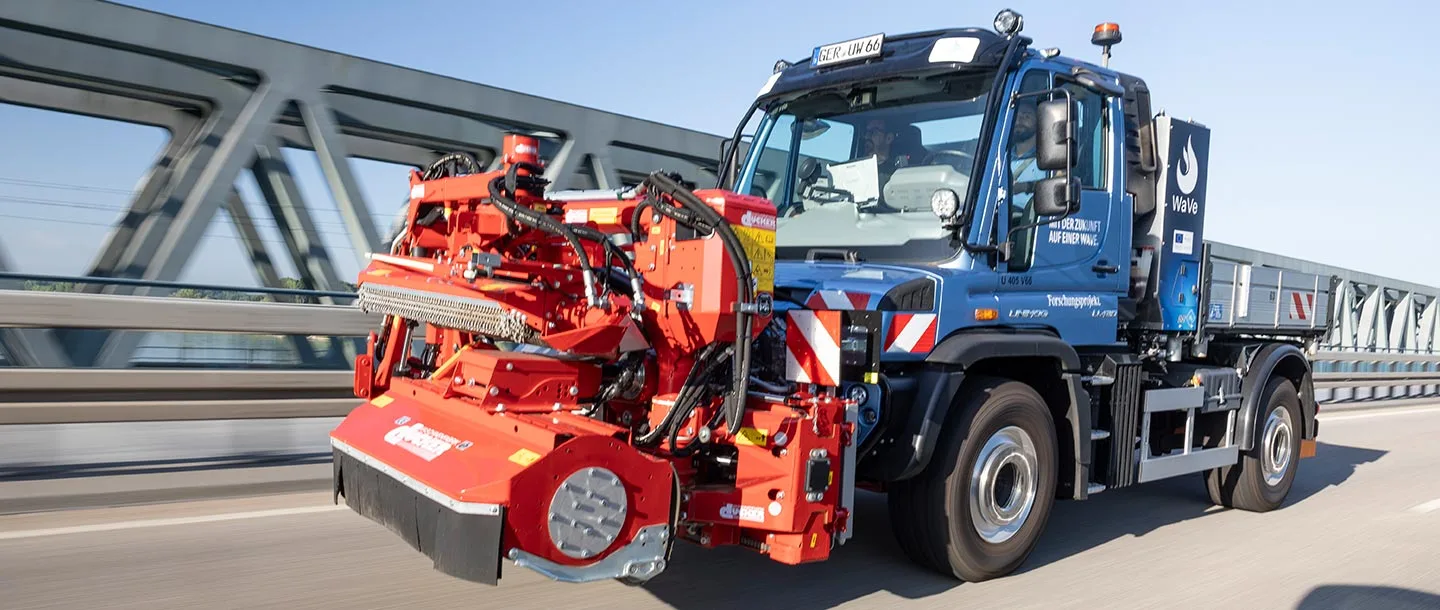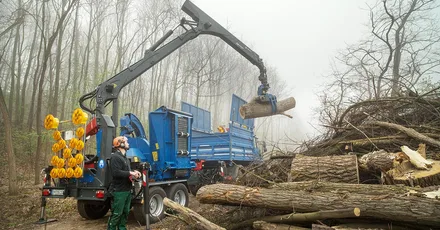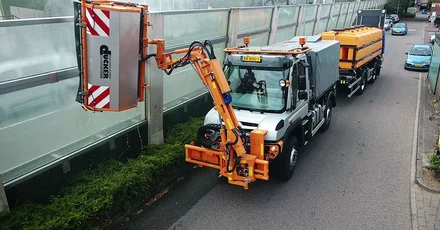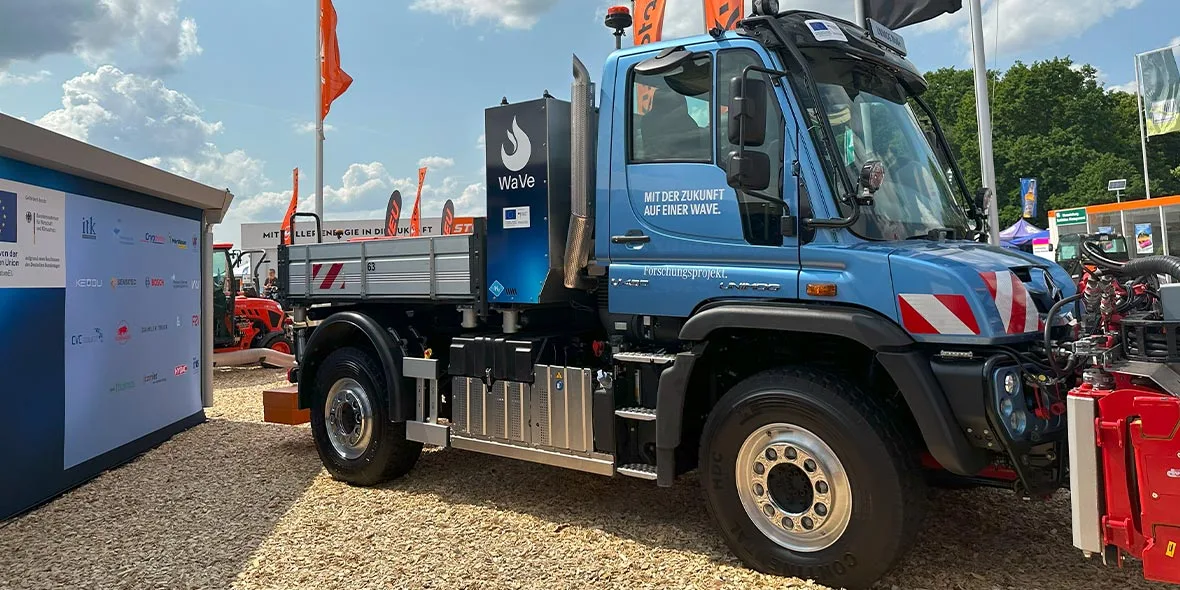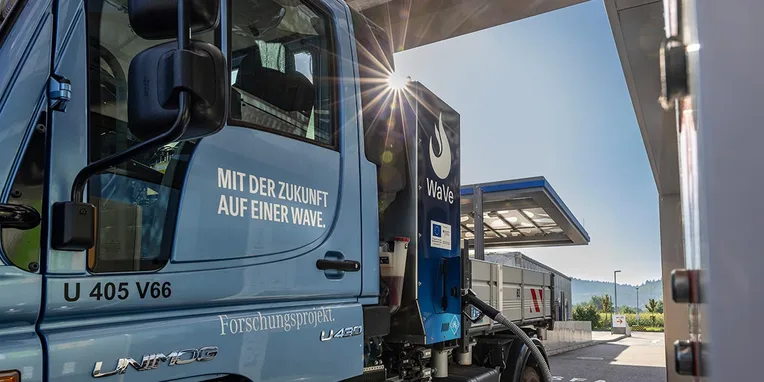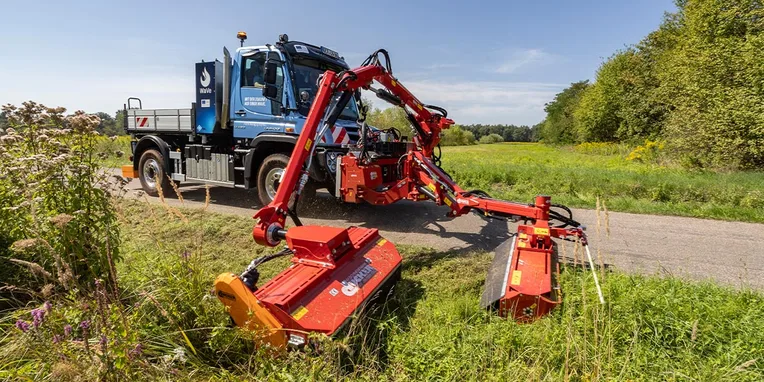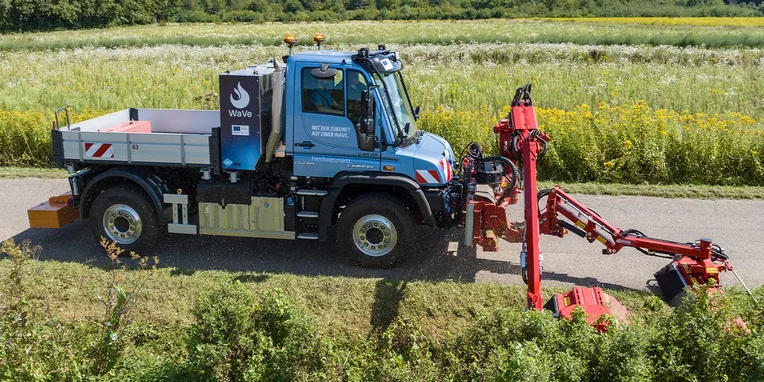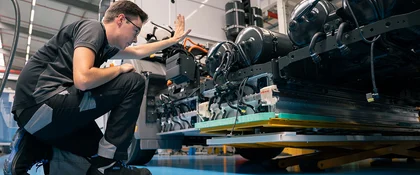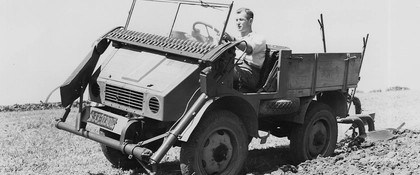Hydrogen-powered Unimog as a climate-neutral commercial vehicle when in operation.
How do you reduce a heavyweight’s carbon footprint without compromising on its performance? The engineers at Daimler Truck are dealing with this question. In order to help shape a sustainable future, only climate-neutral commercial vehicles are to be offered in the global core markets of Europe, the USA and Japan by 2039. An exciting direction in terms of propulsion with low emissions: hot hydrogen combustion. As part of the publicly funded "WaVe" pilot project, Mercedes-Benz Special Trucks has developed a hydrogen-powered Unimog together with its project partners. It was first presented to the public at the demopark 2023 trade fair.
Several paths into the future.
In order to achieve the goal of climate neutrality by 2039, Daimler Truck is pursuing a clear development strategy in the transformation towards CO2-neutral transport. In addition to converting to battery operation, the team at the Mercedes-Benz plant in Wörth is also actively exploring the possibility of drastically reducing CO2 emissions by using hydrogen as the propulsion system.
